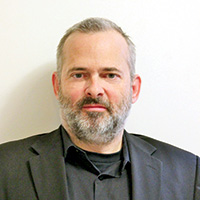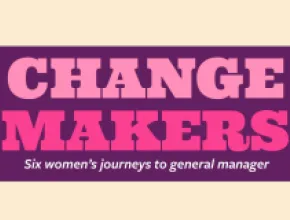"I’d be concerned about virtual shows replacing live ones when virtual honeymoons replace the real thing.” So said industry leader Jason Chudnofsky many years ago about virtual shows.
Chudnofsky has been at the forefront of the technology event business for the last two decades, with leadership positions ranging from president of the legendary COMDEX to chairman of the Society of Independent Show Organizers. It was from this informed and influential vantage point that he famously commented on industry fears over the emergence of virtual meetings.
“People felt threatened by what they saw as a revolution that was going to take away their jobs and take face-to-face interaction out of the meetings equation,” says Chudnofsky, now president and CEO of his own Boston-area consultancy, Portfolio Media Group.
But there is a strong business case for virtual or hybrid gatherings. First there’s the issue of travel safety concerns in the wake of 9/11, then there’s the effort toward austerity measures in the wake of the global meltdown.
As Chudnofsky acknowledges, virtual solutions create significant cost savings and other efficiencies, including helping the environment. Yet, when speaking to senior executives and planners in the association and nonprofit industry, he finds persistent apprehension about going the virtual route.
“Virtual technology is simply a tool for augmenting time-honored strategies for connecting people with people, information and opportunities before, during and after the event,” Chudnofsky says.
“Really it’s more of an evolution than a revolution,” he continues, “but by and large, associations are not there yet in terms of applying virtual technology to these strategies.”
That said, leading industry organizations such as PCMA are embracing virtual technology as a means of significantly expanding reach, return on experience and return on investment while preserving that all-important face-to-face component.
“The key to getting it right lies in creating the right balance,” Chudnofsky says. PageBreak
Mission Critical
To paraphrase Mark Twain, reports of the death of face-to-face meetings are greatly exaggerated.
Cisco’s London-based Economist Intelligence Unit recently surveyed 862 senior executives globally across 19 industries for their views on how best to interact with partners, customers and suppliers. As revealed in EIU’s resulting report, the majority of respondents voted for face-to-face connection, preferring in-person meetings for everything from solving problems to enhancing customer relationships.
For associations such as PCMA though, getting everybody in the room at the same time is a constant challenge.
“Our mission is to elevate the profession through education, but you can’t do that if you can’t reach members with such busy schedules as ours,” says Mary Reynolds Kane, PCMA’s director of online marketing. “So while we believe strongly in face-to-face meetings, we would be remiss if we ignored people who could not attend for scheduling, budgetary or other reasons.”
PCMA has turned to virtual technology solutions to reach these off-site conferees while extending its event to a larger audience.
“We also use hybrids and virtual extensions to bring our brand of senior-level meetings industry education to consumers,” Kane says.
In January 2011, PCMA utilized a virtual event platform for a three-day hybrid showcase that included a press conference, education sessions and interviews hosted by a live virtual moderator. The association expanded upon the concept this past January.
“We went even larger in 2012, including breakout sessions, live experiences from the PCMA Learning Lounge and more content,” Kane notes.
Balance, flexibility and choice defined this hybrid event. Attendees could choose—from concurrent content—what they wanted to watch at different times. Three moderators chatted with online attendees and created a community. Serving as the face of the online experience, a virtual moderator interviewed people from the conference; on-site and online attendees were able to watch the interviews live.
“Creating a virtual extension is like creating another meeting,” Kane says. “You are engaging attendees in an experience that has moments for connecting, learning and relaxing.”
This flexible engagement extends especially to content. PCMA has created post-event “rebroadcasts,” with simulcast sessions and speakers from the original conference available for live chat.
“The hybrid approach is great because the content lives on forever after the live event,” Kane says. “Conferees can access the content whenever they want.”
For associations, virtual technology also can be very good for business.PageBreak
Bottom Line Results
Based in Pleasanton, Calif., the Virtual Edge Institute (VEI) is dedicated to advancing the development and adoption of virtual event and meeting technology. Michael Doyle, founder and executive director of the international organization, sees multiple benefits for associations using virtual technology.
“In many associations, the majority of members cannot or do not attend events in person,” Doyle says. “While nobody thinks attending virtually is a better experience than attending in person, there is a tremendous appreciation for the online option by those that can’t make it.”
The result is more appreciation of membership and interestingly, more attendance at physical events, according to Doyle.
“This translates into more revenue—or at least covers expenses associated with the program,” he says.
Doyle cites the “virtual” success of the American Institute of Certified Public Accountants (AICPA) as an example.
“AICPA runs 60 conferences, workshops and schools to educate the financial marketplace,” he says. “The association wanted to use technology to deliver its education to a broader audience and generate new revenues.”
According to Doyle, engaging dormant members and exposing the AICPA conference product line to an expanded audience has produced handsome results for the association so far: it’s had an average revenue increase of $25,000 per meeting, with year-over-year online attendance up 184 percent from year-end 2010 versus year-end 2011.
“Early adopters of virtual event technology had unrealistic expectations about adoption rates from members, exhibitors and sponsors, and were thus disappointed,” Doyle says. “Costs came in higher, revenue came in lower and audience size and participation levels were disappointing.”
That’s all changed now.
“Today, costs are lower, revenue generation is greater and virtual events are becoming easier to produce,” Doyle continues. “Association members expect to have an online option and—as our research shows—having a virtual option increases the rationale for attending an event in person.”
Virtual solutions allow event producers and sales teams to be more creative with revenue-generating sponsorship programs, too, such as in the case of Reston, Va.-based nonprofit membership organization Practice Greenhealth (PGH).
“Seeking a way to boost sponsorship revenue, PGH added a value-enhancing ‘virtual upgrade’ tool to justify a $10,000 rate increase to its physical event sponsors,” Doyle says. “Within two months, PGH signed up eight companies to increase their sponsorship levels, allowing it to host the full conference stream on their websites.”
Doyle envisions a bright future ahead.
“Many association members work for corporations, where they are continually exposed to digital solutions ranging from events, meetings and learning programs to HR and marketing,” he says. “More and more, they see the positive impact that digital technology has on live events.”
“Furthermore,” Doyle believes, “we have barely scratched the surface on how best to use these technologies to enhance meetings.”
“I foresee the day when presentations happen online before the actual meeting,” he predicts, “where the face-to-face time is then devoted to more productive activities. But we’re not there quite yet.”
Before becoming a journalist, regular Meetings Focus MidAmerica contributor Jeff Heilman worked for a U.K.-based start-up developing smartcard-based visitor tracking and lead generation solutions for the events industry.







